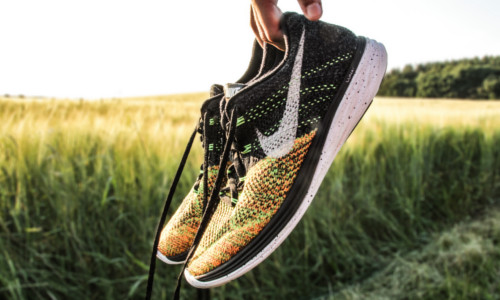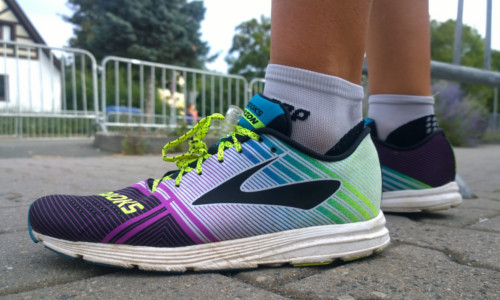Tips for Choosing the Right Shoes to Prolong Your Workout and Avoid Injuries
Author

A keen runner, skier and nuts about cycling. Karl lives in Cumbria, where he loves encouraging his two children to follow in his outdoor lifestyle. Whilst out and about keeping active, Karl keeps a diary and shares it with Outdoor Look.

Ever wondered if the shoes that you have for your fitness routine are the right ones for you? If you are suffering frequent injuries and have a sore foot most of the times after your workout session, it is more than likely that your shoes are not suited for your fitness regimen. As a roadrunner, I have suffered many injuries ranging from hip pain to shin splints. My running woes led me to take advice from seasoned athletes and I came to know about shoes and their criticality in running. Once I found the right shoes for myself, I felt comfortable running greater distances which have enhanced my fitness level a great deal. Just like running, there are various activities which demand that you wear the right footwear for excelling in them.
Selecting the Right Road Running Shoes
While running on hard surfaces like roads or pavements, your foot (and especially the front of it) bears the most load of your body. As a runner always lands on the front side of the shoes, running shoes generally have a great cushioning system that bears the brunt of the weight. These shoes are lightweight, stable, and designed for supporting your foot through its wide range of movement while running. The running shoes come with a midsole for long-lasting comfort, a mesh upper lining for breathability and rubber outsole for traction. As a result of these incorporated features, running shoes are perfect for running long distances on roads, sidewalks and smooth, paved surfaces.
Selecting the Right Cross Training Shoes

Made for non-running exercises, cross training shoes are armed with midsole for maximum mobility and a grooved outsole for versatile traction needed for different activities. Cardio based workouts and lifting light weights demand a higher level of stability which is provided by cross training shoes. Along with stability, these shoes support lateral movements and have great breathability which makes them suitable for running short distances. However, if you are planning for longer runs, it is advised that you buy running shoes for greater comfort and durability. Cross Training Shoes have little-to-no heel-to-toe drop, which makes them extremely stable for supporting your flexible cross training routine.
Selecting the Right Trail-Running Shoes
I used to assume that road running shoes could be used for trail running as well, since I thought that they were similar and would roughly serve the same purpose. But soon, I realized that the challenges of a trail run are very different. As a run through natural terrain comes with a variety of obstacles, such as muddy or waterlogged ground, simple road running shoes are not up to the task. I bought trail-running shoes and made my weekly hikes a whole lot easier. With my waterproof trail-running shoes, I no longer get wet in the wild. My new shoes are heavier than my running shoes and feature a lugged outsole which provides me great traction on varied terrains. The upper of the shoe has synthetic material which prevents rocks and other trail debris from entering it. If you often run on rocky surfaces, I advise that you look for trail shoes with a hearty rubber toe guard for extra protection. Trail-running shoes are better for running on treadmills than your road-running shoes, so if you like to run indoors in your gym, they should be your automatic choice.
Author

A keen runner, skier and nuts about cycling. Karl lives in Cumbria, where he loves encouraging his two children to follow in his outdoor lifestyle. Whilst out and about keeping active, Karl keeps a diary and shares it with Outdoor Look.
Categories
- Sport (28)
- Product Reviews (3)
- Team Outdoor Look (7)
- Mike Wild (2)
- Mike Payton (2)
- Suse Hammond-Pears (3)
- Snowboarding (12)
- Latest Offers (105)
- Shop Talk (1)
- Competitions (7)
- Walking (413)
- Lifestyle Fashion (8)
- Travel (86)
- Kit Guides (176)
- Workwear Clothing (6)
- Safety Workwear (4)
- Health/Fitness (289)
- Skiing (91)
- Great Outdoors (1316)
- Cycling (92)
- January 2025
- December 2024
- November 2024
- October 2024
- September 2024
- August 2024
- July 2024
- June 2024
- May 2024
- April 2024
- March 2024
- February 2024
- January 2024
- December 2023
- November 2023
- October 2023
- September 2023
- August 2023
- July 2023
- June 2023
- May 2023
- April 2023
- March 2023
- February 2023
- January 2023
- December 2022
- November 2022
- October 2022
- September 2022
- August 2022
- July 2022
- June 2022
- May 2022
- April 2022
- March 2022
- February 2022
- January 2022
- December 2021
- November 2021
- October 2021
- September 2021
- August 2021
- July 2021
- June 2021
- May 2021
- April 2021
- March 2021
- February 2021
- January 2021
- December 2020
- November 2020
- October 2020
- September 2020
- August 2020
- July 2020
- June 2020
- May 2020
- April 2020
- March 2020
- February 2020
- January 2020
- December 2019
- November 2019
- October 2019
- September 2019
- August 2019
- July 2019
- June 2019
- May 2019
- April 2019
- March 2019
- February 2019
- January 2019
- December 2018
- November 2018
- October 2018
- September 2018
- August 2018
- July 2018
- June 2018
- May 2018
- April 2018
- March 2018
- February 2018
- January 2018
- December 2017
- November 2017
- October 2017
- September 2017
- August 2017
- July 2017
- June 2017
- May 2017
- April 2017
- March 2017
- February 2017
- January 2017
- December 2016
- November 2016
- October 2016
- September 2016
- August 2016
- July 2016
- June 2016
- May 2016
- April 2016
- March 2016
- February 2016
- January 2016
- December 2015
- November 2015
- October 2015
- September 2015
- August 2015
- July 2015
- June 2015
- May 2015
- April 2015
- March 2015
- February 2015
- January 2015
- December 2014
- November 2014
- October 2014
- September 2014
- August 2014
- July 2014
- June 2014
- May 2014
- April 2014
- March 2014
- February 2014
- January 2014
- December 2013
- November 2013
- October 2013
- September 2013
- August 2013
- July 2013
- June 2013
- May 2013
- April 2013
- March 2013
- February 2013
- January 2013
- December 2012
- November 2012
- October 2012
- September 2012
- August 2012
- July 2012
- June 2012
- May 2012
- April 2012
- March 2012
- February 2012
- January 2012
- December 2011
- November 2011
- October 2011
- September 2011
- August 2011
- May 2010
- April 2010
- March 2010
- February 2010
- January 2010
- November 2009
- October 2009
- September 2009
Submit a Comment